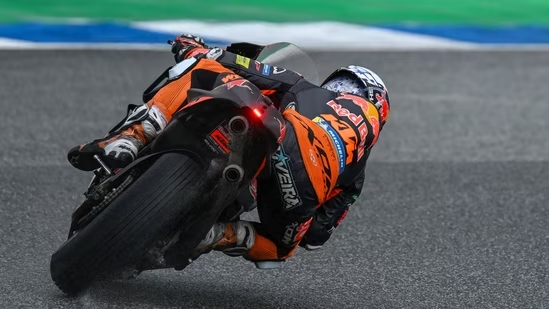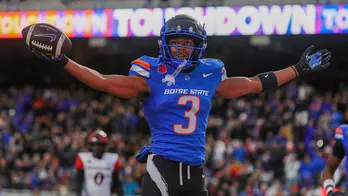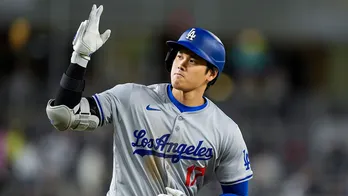MotoGP ready to step into void left by Formula 1’s exit
Nine years have passed since the Buddh International Circuit bid adieu to Formula 1, which made an unceremonious exit from India. F1 came to India with pomp and the country’s elite graced the event, declaring that India had finally arrived as an international motorsport destination.  PREMIUM
PREMIUM
Despite the promise, the Indian Grand Prix lasted just three years until 2013—two short of the five-year-contract—due to logistical, financial, tax and bureaucratic hurdles. Barring a few domestic racing events, BIC in Greater Noida has rarely smelt burning rubber since.
But now, Indian motorsport is seeing a new spark. Last weekend, MotoGP—the world’s premier two-wheel racing series—announced it will come to India, starting September 2023. Dorna Sports, the international organiser and commercial rights holder of MotoGP, signed a seven-year deal with Noida-based Fairstreet Sports, the race promoters.
But, can MotoGP succeed where F1 failed?
“We were not able to create an experience in F1. It was the first time an event of such a big level had happened in the country. We, our authorities, were not ready for that type of agreement or contract. We have taken a lot of learnings from there and ensured that if they (MotoGP) come here, they come only to execute the race," says Fairstreet COO Pushkar Nath Srivastava.
A major factor that prompted Fairstreet to try and get MotoGP was that the same party heads the governments in Uttar Pradesh and the Centre, unlike the last time. That is expected to help address logistical issues, and get permissions and clearances promptly.
“This is one of the blessings for us. You cannot believe how fast we are moving. Everyday our dynamics are changing because the government is running so fast. The government has also learnt from it (F1 experience)," said Srivastava. “The state government has assured us all track related help. They know this event is going to create a lot of jobs. It is not a one-time event but a seven-year contract.”
A major problem F1 faced in India was that the government didn’t recognise it as a sport. It was classified as entertainment, leading to tax issues. The Centre finally recognised the Federation of Motor Sports Clubs of India (FMSCI), the sport’s governing body, as a National Sports Federation (NSF) in 2015. “It helps a lot. It was done by the present government which means they had the vision. They have said that motorsport now is considered a sport and it will get sports benefits,” added Srivastava.
This means FMSCI will, along with the promoters, liaise with the ministries of sports, external affairs and home to get permissions that will to allow foreign MotoGP staff to come in, visas, equipment, etc. It will also help ensure BIC gets homologated before the race on September 24. FMSCI will also liaise with the international motorcycling federation (FIM) to implement changes on the circuit to host the MotoGP race.
“Today there is a lot more understanding of motorsport in India in terms of commissions, clearances, visas. India has advanced a lot from then (F1 days) though there is a lot more to be done in terms of understanding of the sport, its timelines and the need for much less bureaucracy,” says FMSCI president Akbar Ebrahim.
“It will also be much appreciated if single window clearance cells are set up for international motorsport events. Whatever difficulties F1 faced at that time, people who were handling it have understood how to prepare for it.”
It is understandable why Fairstreet and FMSCI want to get an event of the scale of MotoGP to India. Dorna is perhaps more excited. With more than 200 million motorcycles on its roads, India is one of the world’s biggest motorcycle markets.
“India is a key market for the motorcycle industry and, by extension, for MotoGP as the pinnacle of the two-wheeled world,” says Dorna CEO Carmelo Ezpeleta, who last month visited India and met UP chief minister Yogi Adityanath. The CM has assured his “government will provide all the necessary support to make this event a huge success”.
Two-wheeled transportation accounts for nearly 75% of the vehicles used daily in India—a key focus for all MotoGP manufacturers. Honda, KTM, Yamaha, Ducati and Aprilia–all of whom will race next year–produce two-wheelers for the Indian market. “MotoGP as a product is meant for India and vice-versa. The match is good,” says Dorna chief sporting officer Carlos Ezpeleta.
Labelled as the ‘Grand Prix of Bharat’, the event is expected to boost trade and tourism and generate an estimated 50,000 jobs, directly or indirectly, and up to 5,000 jobs for the race weekend.
“What MotoGP will do for growing the two-wheeler industry is huge. Once the top end of the pyramid comes in, it will have a very big effect downstream. Once the event runs here, other events like Superbike World Championship, Asia Road Racing Championship (ARRC) would start coming to India,” says Ebrahim.
“It will strengthen the National Championship further as Indian teams and sponsors will look at ways to get involved upstream. It creates a lot of opportunities in terms of jobs, participation from teams, engineers, mechanics, officials, service providers, marshals, recovery, medical and hospitality.”
Unlike F1, where the big push is towards catering to the United States market, MotoGP is heading eastwards with seven of the 21 races next year to be held in Asia. India’s will be 14th race and will also become the 31st MotoGP host country.
“The fact that India is the largest manufacturer of motorcycles, MotoGP had to come to India. We are the country that wants them because of not just the number of people but the industries and people available that can embrace MotoGP. It's fantastic that MotoGP is finally finding its way to India,” says rally ace CS Santosh, the first Indian to compete and complete the Dakar Rally.
Santosh was initially inspired by greats likes Valentino Rossi and Max Biaggi before choosing off-road racing. “I will definitely be there (for the India race),” said Santosh, who last month went to Spain to watch the Aragon GP.
Experience unrestricted digital access with HT Premium
Explore amazing offers on HT + Economist Start 14 Days Free Trial Already Subscribed? Sign In
Disclaimer: The copyright of this article belongs to the original author. Reposting this article is solely for the purpose of information dissemination and does not constitute any investment advice. If there is any infringement, please contact us immediately. We will make corrections or deletions as necessary. Thank you.







